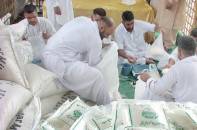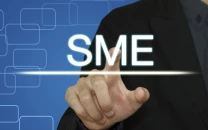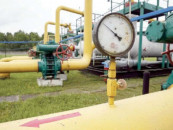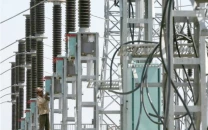High policy rate: Private businesses borrowing plunges by 96% in Jul-Nov
Federal cabinet members perturbed by low credit demand

With the stability in macroeconomic indicators, the policy rate would be revised down in the coming months. PHOTO: FILE
In a recent meeting of the cabinet, chaired by Prime Minister Imran Khan, government ministers voiced their resentment over the rising inflation, decline in large-scale manufacturing (LSM) output and low credit offtake by the private businesses.
The meeting was told that credit flow to private businesses stood at Rs324 billion in first five months of fiscal year 2018-19, which dropped to Rs12 billion in Jul-Nov of the current fiscal year due to higher policy rate of 13.25% against 8.5% in the same period of previous year.
Similarly, the weighted average lending rate stood at 14.2% in Jul-Nov FY20 compared to 9.4% in the same period of previous fiscal year.
Cabinet members were told that the higher policy rate had impacted the appetite of private businesses for credit offtake.
With the stability in macroeconomic indicators, the policy rate would be revised down in the coming months, which would spur credit demand by the private businesses, the meeting participants noted. The importance of agriculture sector was also highlighted and it was suggested that the next presentation on key economic indicators should include a report on the performance of agriculture sector as well.
Credit flow to the agriculture sector rose 24% to Rs295 billion in Jul-Nov FY20 against Rs238 billion in the corresponding period of last year. Cabinet members raised concern over the decline in LSM output as the production by large industries dropped 5.9% in first five months of FY20.
They were also perturbed by the rising inflation as the Sensitive Price Index (SPI) stood at 16% against 5.8% last year. Inflation, measured by the Consumer Price Index (CPI), was calculated at 10.8% compared to 6.1% last year.
It was explained that since the previous government had not revised up electricity tariffs for 18 months, the “legacy liability” resulted in a sudden and substantive increase in electricity rates which, in turn, fuelled inflation.
It was anticipated that the rising trend would ease in the near future. However, the SPI inflation, especially related to locally produced food items, was more worrisome, which was due to supply shocks rather than increase in electricity tariffs. The cabinet was briefed that inflation could have many underlying reasons like imported inflation, administered price inflation or inflation due to supply shocks.
Exploitation by middlemen by increasing their margins in the face of inflation uncertainty could be another factor. It was suggested that provincial governments, therefore, should improve their oversight to check hoarding and ensure abundant supply of locally produced food items.
Cabinet members were told that lacklustre performance of the real sector was expected in the wake of government’s contractionary policies to immediately address the current and fiscal account deficits.
They, however, expressed satisfaction that macroeconomic indicators were indicating that the economy had stabilised and was at a take-off stage, in line with the government’s plan for economic revival.
Published in The Express Tribune, January 30th, 2020.
Like Business on Facebook, follow @TribuneBiz on Twitter to stay informed and join in the conversation.



















COMMENTS
Comments are moderated and generally will be posted if they are on-topic and not abusive.
For more information, please see our Comments FAQ